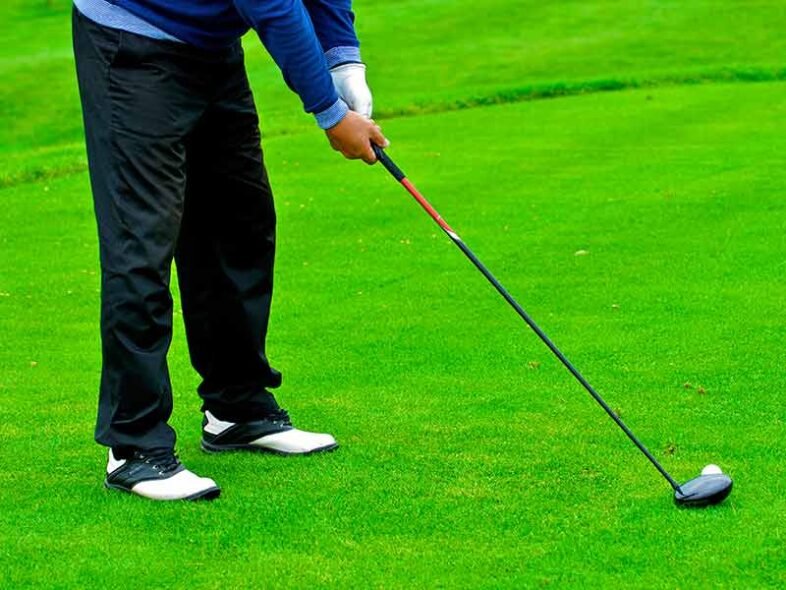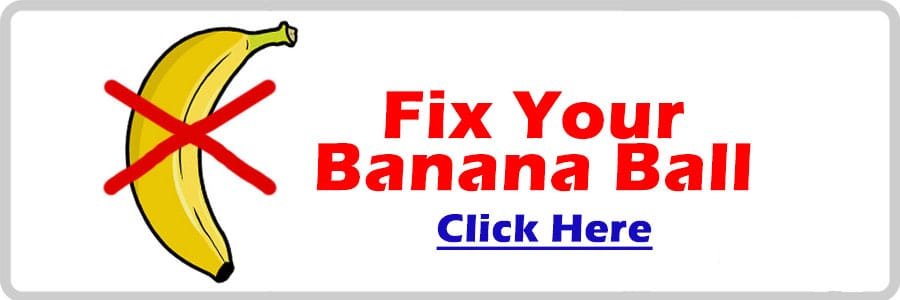Have you ever found yourself standing on the golf course, ready to tee off, only to watch your ball slice dramatically to the right? It can be frustrating, especially when you know you have the skills to make great shots. One key factor that can help you prevent slicing is grip pressure. By focusing on grip pressure and how tightly you hold your club, you can improve your swing mechanics and overall ball flight.
Understanding the Slice
A slice is typically characterized by a shot that curves dramatically to the right for a right-handed golfer (left for a left-handed golfer). This means that instead of traveling straight down the fairway, your ball veers off course, which can lead to lost strokes and a stressful game. Understanding the mechanics behind a slice can help you recognize how grip pressure plays a role.
What Causes a Slice?
Several factors contribute to a slice. It’s not just about grip pressure, but it’s certainly a significant aspect. Here are some common causes:
- Open Clubface: An open clubface at impact can lead to a slice. This means the face of the club is pointed to the right of your target at the moment of contact.
- Outside-In Swing Path: If your swing path comes from outside the line of your target and moves inward, it encourages a slice.
- Poor Grip: An improper grip can cause you to lose control of your clubface, leading to errant shots.
Understanding these factors will help you see the importance of focusing on grip pressure to avoid that dreaded slice.
The Importance of Grip Pressure
Grip pressure may seem like a minor detail, but it’s one of the most crucial aspects of your swing. Your grip controls the club’s movement through impact, and getting it right can make all the difference.
What Is Grip Pressure?
Grip pressure is the amount of force you apply with your hands to hold the golf club. It can vary from player to player and even from shot to shot. An overly tight grip can cause tension in your arms, while a grip that’s too loose can lead to a lack of control.
How Grip Pressure Affects the Swing
Your grip pressure impacts various aspects of your swing:
- Clubface Control: Proper grip pressure allows better control over the clubface, helping to maintain the desired angle through impact.
- Swing Path: The right amount of pressure can lead to a smoother, more consistent swing path.
- Body Tension: Maintaining a relaxed grip can contribute to overall body tension, improving your swing fluidity.
By managing your grip pressure, you can start to eliminate those slices and hit straighter shots.
Finding the Right Grip Pressure
Once you understand the importance of grip pressure, the next step is finding the right amount for your game. There isn’t a one-size-fits-all solution, so experimentation is key.
Light Vs. Tight Grip
To help unpack this, let’s create a simple table comparing light and tight grip pressure:
| Grip Pressure | Advantages | Disadvantages |
|---|---|---|
| Light | Promotes relaxation, smooth swings | May result in loss of control |
| Tight | Ensures control over the clubface | Can cause tension, leading to mishits |
Finding Your Sweet Spot
To discover your ideal grip pressure, consider practicing with a focus on tension. Here’s how you can do it:
- Warm Up: Start your practice session with some light swings, paying attention to your grip.
- Experiment: Try holding the club with varying pressure – light, moderate, and tight.
- Observe: Note how each grip affects your swing path and ball flight.
Finding your sweet spot takes time, so be patient with yourself as you figure this out.
Developing a Consistent Grip
Consistency is key in golf, and that extends to your grip. A reliable grip can help you swing more effectively and prevent slicing.
Grip Types and Techniques
There are different types of grips you can adopt in golf:
- Overlap Grip: This is where the pinky finger of your trailing hand rests on top of the index finger of your leading hand. It promotes a secure hold and is popular among many golfers.
- Interlocking Grip: Here, the pinky and index fingers interlock. This grip can help maintain control for those with smaller hands.
- Baseball Grip: This involves placing all ten fingers on the club. While less common among advanced players, it can work for beginners.
Choosing a grip type that feels comfortable is essential for developing consistency.
Grip Pressure During the Swings
Understanding your grip pressure during different swings also matters. Here’s a breakdown:
| Phase of Swing | Suggested Grip Pressure |
|---|---|
| Address | Light to Moderate |
| Backswing | Moderate |
| Transition | Light to Moderate |
| Impact | Moderate |
| Follow-through | Light |
By being aware of how your grip pressure should change throughout the swing, you can maintain better control and reduce the chances of slicing.
Practicing for Better Grip Control
Practicing your grip can lead to improved swing outcomes. There are specific drills you can do to enhance your grip pressure and, in turn, reduce slicing.
Grip Pressure Drills
Here are a few drills that can help you develop a better grip:
- Squeeze the Towel Drill: Take a towel and squeeze it tightly with both hands. This drill can help you feel the tension required in your grip.
- One-Handed Swings: Practice making swings with just your leading hand, then your trailing hand. This technique will help you understand how each hand contributes to grip pressure.
- Mirror Drill: Use a mirror to check your grip position and pressure throughout your swing. This visual aid can help you become more aware of your habits.
Incorporating these drills into your practice routine can strengthen your understanding of grip pressure.
The Mental Aspect of Grip Pressure
It’s not only physical; your mental approach to grip pressure can impact your performance. Tension and anxiety can lead to a tight grip, exacerbating slicing.
Staying Relaxed on the Course
To combat this, it’s essential to develop a relaxed mindset. Here are some tips:
- Breathing Techniques: Take deep breaths before your shot to calm your nerves.
- Positive Visualization: Picture your swing and the desired result. Positive imagery can help your body stay relaxed.
- Focusing on Commitments: Rather than obsessing over technical aspects, commit fully to your shot and trust your swing.
By managing the mental component, you’ll find it easier to maintain proper grip pressure during your rounds.
Fine-Tuning Your Grip Over Time
As you continue to practice and play, be mindful of how your grip pressure evolves. It can change based on various factors such as weather conditions, your mood, or even your physical condition that day.
Keeping a Practice Log
To track your progress, consider maintaining a practice log that includes notes on:
- Grip Pressure Changes: How your grip felt during different rounds or practice sessions.
- Ball Flight Results: Noting if there were fewer slices when you adjusted your grip can provide solid feedback.
- Successes and Struggles: Recording both can help you identify patterns in your performance.
The more aware you are of your grip pressure, the more effectively you can make adjustments.
Making Adjustments During Play
While it’s essential to work on grip pressure during practice, you should also be prepared to make adjustments when you’re on the course.
Quick Tips for Adjustments
- Check Your Grip Before Every Shot: Take a moment to feel your grip and ensure it’s the correct pressure.
- Stay Aware of Swing Changes: Be conscious of how your grip affects your swing, especially if you notice a slice creeping back in.
- Stay Flexible: If you feel grip tension building up during a round, take a moment between shots to shake out your hands and relax.
By making these adjustments, you can address issues before they turn into bigger problems on the course.
Summary
Focusing on grip pressure is a valuable strategy for preventing slicing in your golf game. Understanding the mechanics behind a slice, finding the right grip pressure for your swing, practicing drills, and maintaining mental awareness can significantly improve your performance.
Golf is a journey of continuous improvement, so don’t hesitate to play around with your grip and stay patient as you find what works best for you. As you refine your grip and swing mechanics, you will likely find those slices becoming less frequent, and you’ll be on your way to a more enjoyable time on the course!







